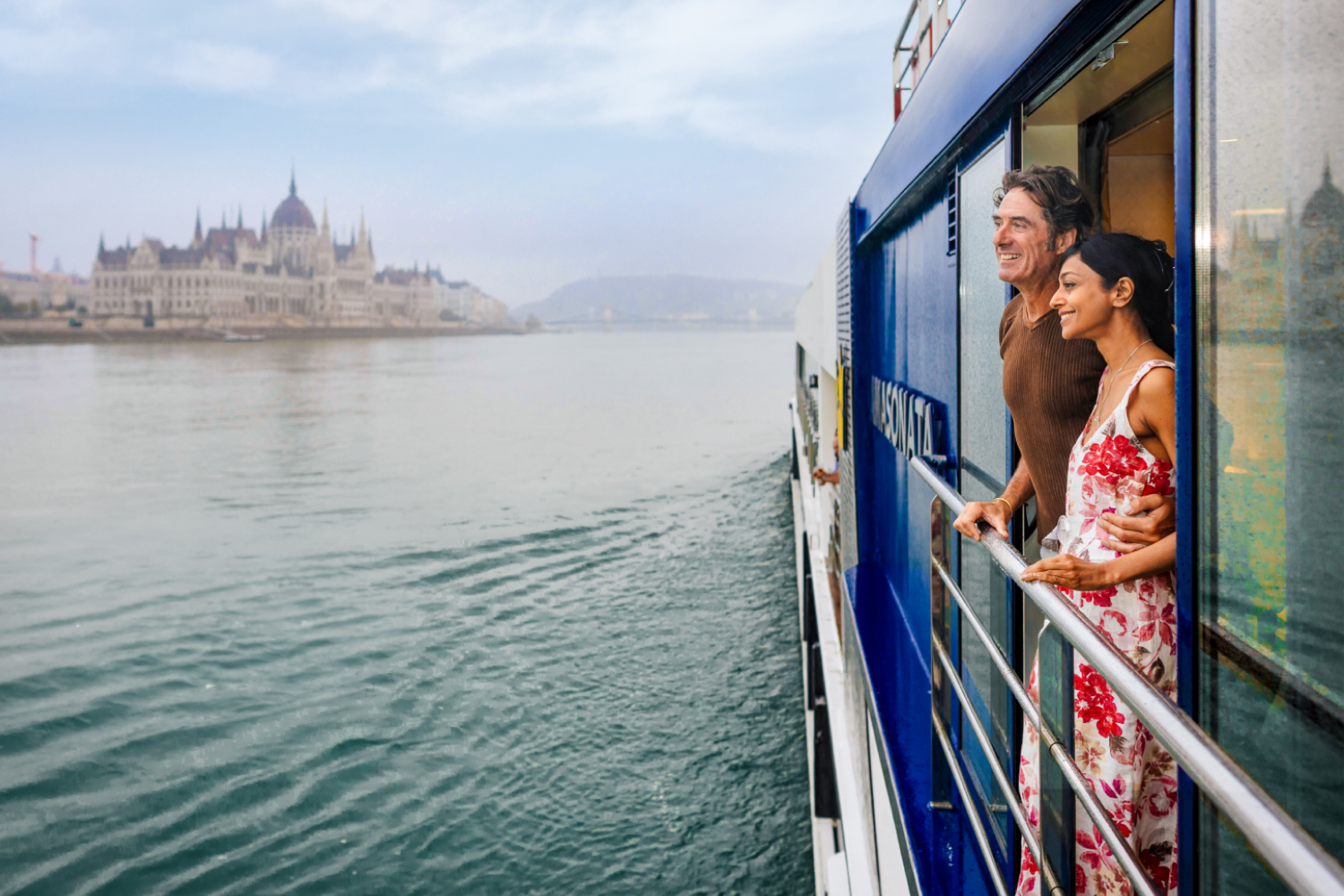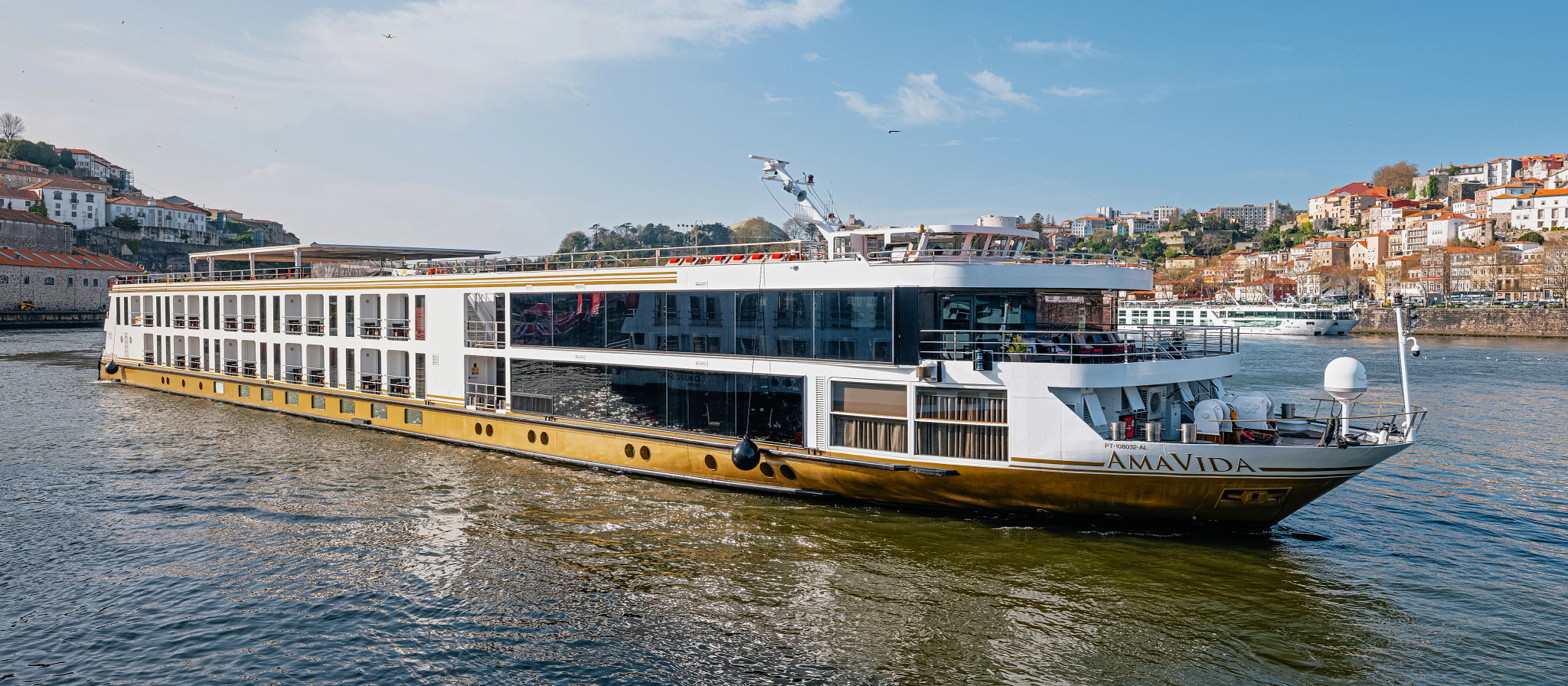Itinerary
Lively, commercial Oporto is the second largest city in Portugal after Lisbon. Also called Porto for short, the word easily brings to mind the city’s most famous product – port wine. Oporto’s strategic location on the north bank of the Douro River has accounted for the town’s importance since ancient times. The Romans built a fort here where their trading route crossed the Douro, and the Moors brought their own culture to the area. Oporto profited from provisioning crusaders en route to the Holy Land and enjoyed the riches from Portuguese maritime discoveries during the 15th and 16th centuries. Later, port wine trade with Britain compensated for the loss of the spice trade and the end of gold and gem shipments from Brazil. In the 19th century, the city went through a period of new prosperity with the rise of industries. In its wake followed the building of workers’ quarters and opulent residences. Since the declaration of Oporto as a World Heritage Site by UNESCO, the city aims to build up a cultural reference that will provide it with a new image, based on deep historical roots. Among the attractions that make Oporto such an interesting place are its graceful bridges spanning the Douro River, a picturesque riverfront quarter and, most notable, its world-famous port wine lodges. Although Oporto is a bustling centre and home to many different businesses, the source of its greatest fame is the rich, sweet fortified red wine we know as port.
Day programme:
EMBARKATION – PORTO, PORTUGAL. Board your river ship for your Flavors of Portugal & Spain cruise. (D)
Lively, commercial Oporto is the second largest city in Portugal after Lisbon. Also called Porto for short, the word easily brings to mind the city’s most famous product – port wine. Oporto’s strategic location on the north bank of the Douro River has accounted for the town’s importance since ancient times. The Romans built a fort here where their trading route crossed the Douro, and the Moors brought their own culture to the area. Oporto profited from provisioning crusaders en route to the Holy Land and enjoyed the riches from Portuguese maritime discoveries during the 15th and 16th centuries. Later, port wine trade with Britain compensated for the loss of the spice trade and the end of gold and gem shipments from Brazil. In the 19th century, the city went through a period of new prosperity with the rise of industries. In its wake followed the building of workers’ quarters and opulent residences. Since the declaration of Oporto as a World Heritage Site by UNESCO, the city aims to build up a cultural reference that will provide it with a new image, based on deep historical roots. Among the attractions that make Oporto such an interesting place are its graceful bridges spanning the Douro River, a picturesque riverfront quarter and, most notable, its world-famous port wine lodges. Although Oporto is a bustling centre and home to many different businesses, the source of its greatest fame is the rich, sweet fortified red wine we know as port.
Day programme:
PORTO. Join a guided tour of Porto’s historic quarter, a UNESCO World Heritage Site. You’ll see the Cathedral, one of the city’s oldest monuments; the main square, ringed with shops and cafes; and the São Bento Railway Station, known for its blue and white tile panels depicting scenes from Portuguese history. You’ll also enjoy a tasting of port, Portugal’s most renowned contribution to the world of wine. For the more active adventure, join a hike in Porto and explore the old harbor quarter, passing through the medieval streets of Porto. (B,L,D)
Lively, commercial Oporto is the second largest city in Portugal after Lisbon. Also called Porto for short, the word easily brings to mind the city’s most famous product – port wine. Oporto’s strategic location on the north bank of the Douro River has accounted for the town’s importance since ancient times. The Romans built a fort here where their trading route crossed the Douro, and the Moors brought their own culture to the area. Oporto profited from provisioning crusaders en route to the Holy Land and enjoyed the riches from Portuguese maritime discoveries during the 15th and 16th centuries. Later, port wine trade with Britain compensated for the loss of the spice trade and the end of gold and gem shipments from Brazil. In the 19th century, the city went through a period of new prosperity with the rise of industries. In its wake followed the building of workers’ quarters and opulent residences. Since the declaration of Oporto as a World Heritage Site by UNESCO, the city aims to build up a cultural reference that will provide it with a new image, based on deep historical roots. Among the attractions that make Oporto such an interesting place are its graceful bridges spanning the Douro River, a picturesque riverfront quarter and, most notable, its world-famous port wine lodges. Although Oporto is a bustling centre and home to many different businesses, the source of its greatest fame is the rich, sweet fortified red wine we know as port.
Day programme:
ENTRE-OS-RIOS. Entre-os-Rios translates to “between the rivers,” and this small village is, quite appropriately, located at the confluence of the Tâmega and Douro rivers. For an authentic slice of Douro River life, enjoy a traditional “home-cooked” meal at a local quinta. (B,L,D)
Day programme:
RÉGUA. Discover the Baroque magic of Mateus Palace and Gardens. Inside, gaze at the beautiful 16th- to 18th-century furnishings that decorate the palace, as well as the distinctive paintings and a ceiling of intricately carved wood. Hear the tale of Mateus Rose Wine and spend some time exploring the palace’s magnificent gardens, considered some of the most beautiful in Portugal. (B,L,D)
Day programme:
RÉGUA – PINHÃO. Venture to the town of Lamego, where you’ll see the “Sanctuary of Our Lady of Remedies” on a city tour or climb the 686-step “Holy Staircase,” beautifully decorated with white and blue tiles, to the top on a guided hike. Whichever excursion you choose will conclude with a tasting of local specialties such as Bôlas de Lamego, bread filled with smoked ham; Presunto, a type of dry-cured ham; and Espumante, a Portuguese sparkling wine. Later in the day, cruise along the scenic Douro to Pinhão, where a wine tasting will be waiting for you in a local quinta. (B,L,D)
Day programme:
PINHÃO. This morning, hike to the 19th-century Pinhão Railway Station, once used to transport wine. Admire the more than 20 historic azulejos (hand-painted tiles) that depict various aspects of the town’s grape harvest. During the afternoon, enjoy lunch at Quinta da Avessada. Here, you’ll enjoy an authentic and traditional dining experience complete with entertainment. Quinta da Avessada is also a fascinating interactive museum commemorating the history and culture of wine in the Alto Douro region, so you’ll have fun discovering all the various stages of wine production as well as doing plenty of tasting. (B,L,D)
Day programme:
BARCA D’ALVA, PORTUGAL. Venture to Castelo Rodrigo, known as the “White Village” because of its almond trees. The site offers spectacular views of the surrounding area. Join a walking tour through its medieval streets and see the houses and establishments with 16th-century façade and Manueline-style windows. If you prefer a more active adventure there, you can hike up to the town. At the end of both tours, enjoy a tasting of local favorites, such as almonds, cheese, bread and wine. Set sail to Pinhão where you’ll be treated to a Port wine tasting. (B,L,D)
Day programme:
VEGA de TERRÓN – DISEMBARKATION. Your journey comes to an end in Vega de Terrón as you prepare for your homeward flight. (B)
Ship features
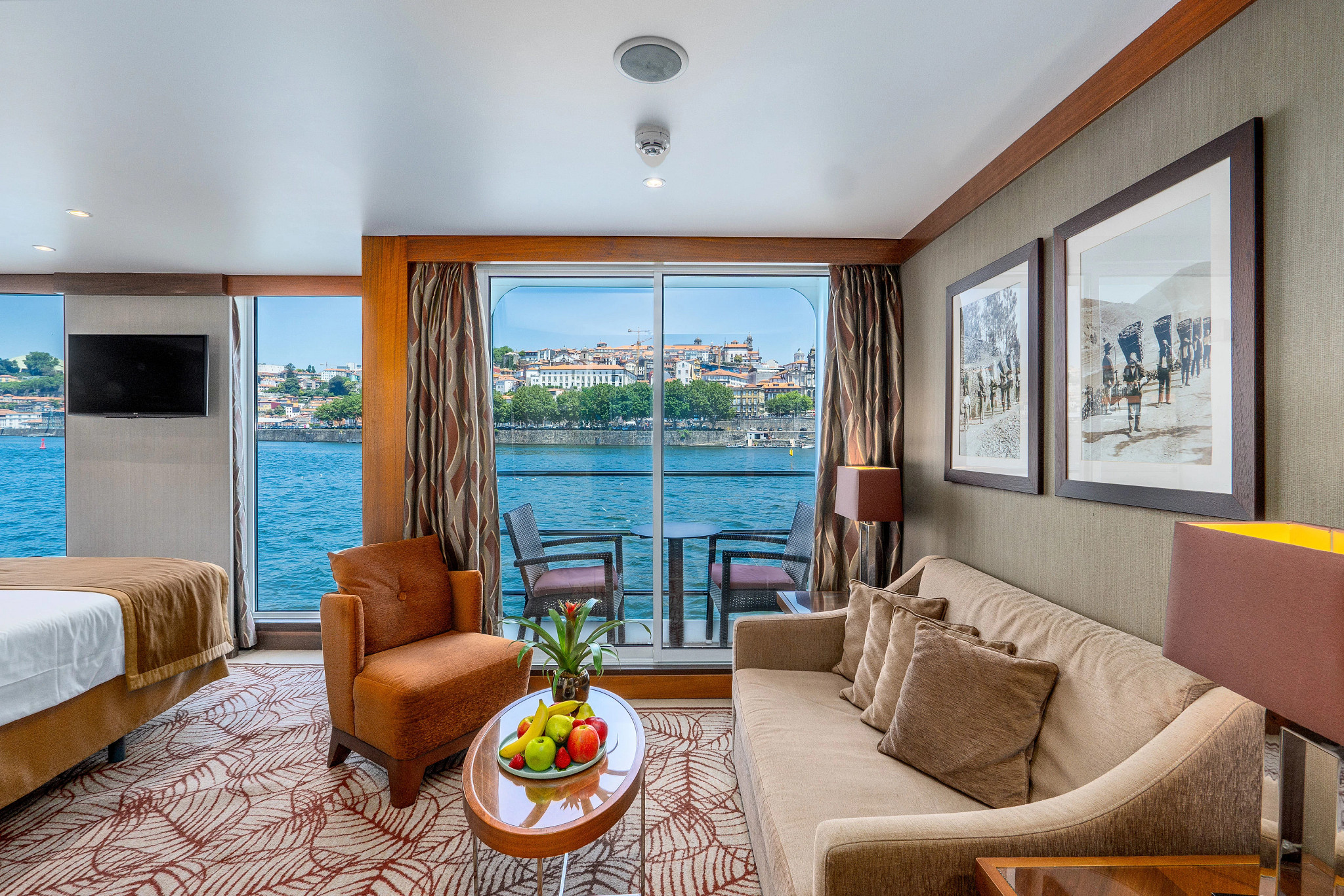
Suite
Suite Features
- In-room temperature control
- Deluxe hotel-style bedding with Egyptian linen, down pillows and duvet
- Spacious bathrooms with multi-jet showerheads
- Large wardrobe, full-length mirror, hair dryer, safe and direct-dial telephone
- Flat-screen TV
- Entertainment on Demand system providing complimentary TV, movies and music library
- Complimentary internet and Wi-Fi
- Complimentary bottled water replenished daily
- Desk and chair

Cat A Staterooms
Stateroom Features
- In-room temperature control
- Deluxe hotel-style bedding with Egyptian linen, down pillows and duvet
- Spacious bathrooms with multi-jet showerheads
- Large wardrobe, full-length mirror, hair dryer, safe and direct-dial telephone
- Flat-screen TV
- Entertainment on Demand system providing complimentary TV, movies and music library
- Complimentary internet and Wi-Fi
- Complimentary bottled water replenished daily
- Desk and chair
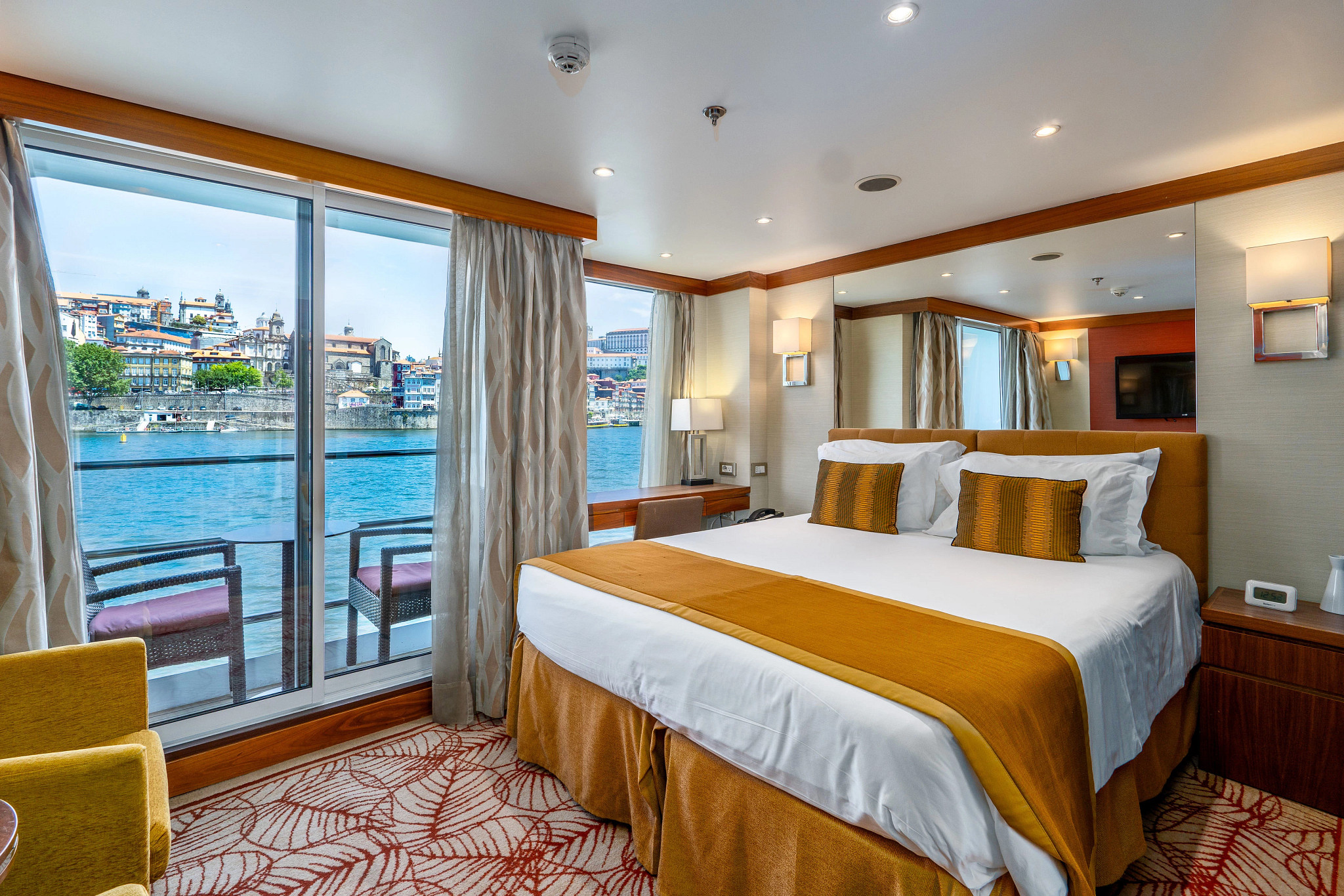
Cat B Staterooms
Stateroom Features
- In-room temperature control
- Deluxe hotel-style bedding with Egyptian linen, down pillows and duvet
- Spacious bathrooms with multi-jet showerheads
- Large wardrobe, full-length mirror, hair dryer, safe and direct-dial telephone
- Flat-screen TV
- Entertainment on Demand system providing complimentary TV, movies and music library
- Complimentary internet and Wi-Fi
- Complimentary bottled water replenished daily
- Desk and chair
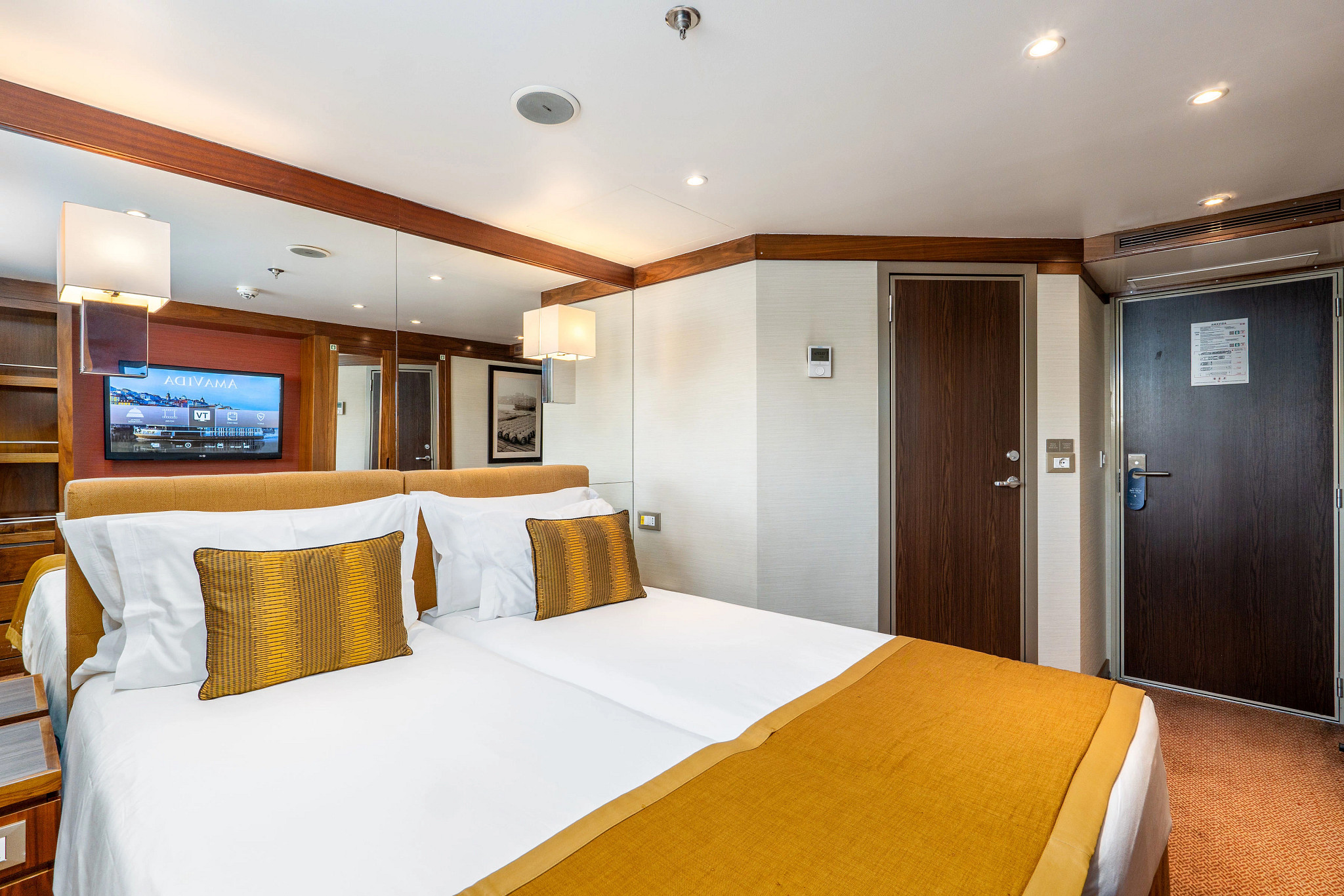
Cat D Staterooms
Stateroom Features
- In-room temperature control
- Deluxe hotel-style bedding with Egyptian linen, down pillows and duvet
- Spacious bathrooms with multi-jet showerheads
- Large wardrobe, full-length mirror, hair dryer, safe and direct-dial telephone
- Flat-screen TV
- Entertainment on Demand system providing complimentary TV, movies and music library
- Complimentary internet and Wi-Fi
- Complimentary bottled water replenished daily
- Desk and chair

Cat E Staterooms
Stateroom Features
- In-room temperature control
- Deluxe hotel-style bedding with Egyptian linen, down pillows and duvet
- Spacious bathrooms with multi-jet showerheads
- Large wardrobe, full-length mirror, hair dryer, safe and direct-dial telephone
- Flat-screen TV
- Entertainment on Demand system providing complimentary TV, movies and music library
- Complimentary internet and Wi-Fi
- Complimentary bottled water replenished daily
- Desk and chair
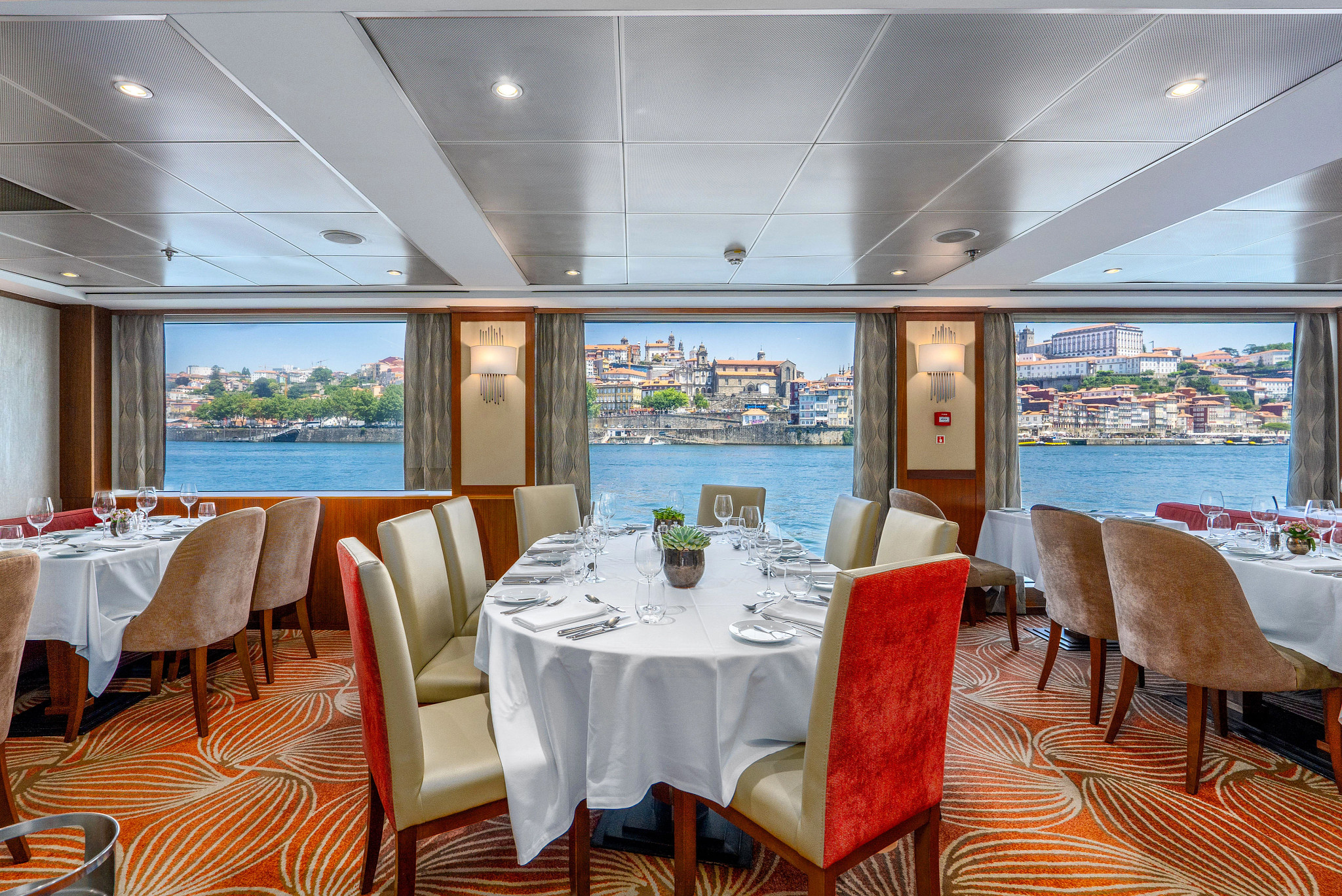
Main Restaurant
AmaWaterways’ expert chefs craft menus that feature exquisite, locally-inspired cuisine as well as traditional, Western offerings. At breakfast, sip sparkling wine as you partake fresh pastries, or opt for something made-to-order from the menu. Stop by the Main Lounge for a light lunch, or head to the restaurant for full menu service and high-quality regional wine or beer. Dinner is a delectable, multi-course affair with wine recommendations that accompany visually stunning, delicious dishes. Try local favourites — like goulash while cruising through Hungary, bratwurst and sauerkraut after returning to the ship from Vienna, or Camembert cheese while on the Seine — or something more familiar, like a sandwich. No matter what your preference, your taste buds are sure to be impressed.

Wellness Recipes
Our skilled chefs ensure that our menus always have healthy choices prepared with the freshest locally-sourced ingredients. We are also able to accommodate dietary needs such as low-sodium, vegetarian and gluten-free. Below are some of our favorite recipes for health-conscious guests.
- Beetroot Salad – This vegetarian recipe brings vivid colors and flavors to life.
- Avocado Chocolate Mousse – An indulgent yet low-carb and sugar-free treat
- Gluten-Free Almond Cake Recipe – A delicious gluten-free way to indulge worry-free.
- Gluten-Free Pizza Recipe – An onboard gluten-free favorite you can easily make at home.
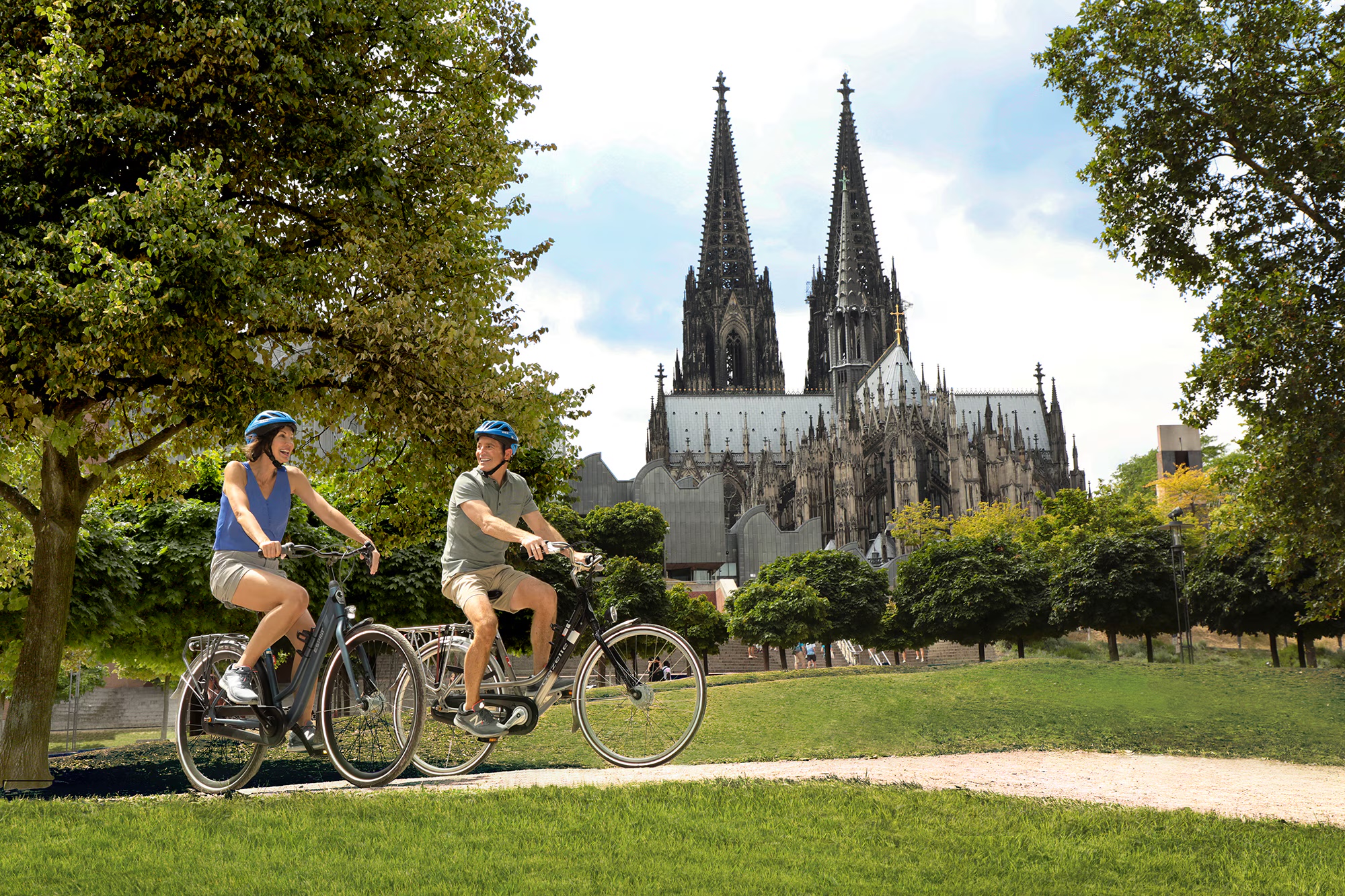
Guided Bike Tours
We are proud to have been the first river cruise line to carry an entire fleet of complimentary state-of-the-art bicycles on board, so you can pedal alongside enchanting riverside pathways and in city centers on a variety of included excursions throughout Europe. Whether you feel like joining one of our exclusive guided bike tours, or you want to reserve a bike to discover a destination on your own, there are many ways for you to explore on two wheels during your river cruise. From lighter five-mile bike tours to rides that stretch over 20 miles, we offer excursions for guests at any level.
Bike Tour Guides
Your guide will be sure to stop and point out highlights along the way, providing interesting facts and history, as well as much-needed water breaks! Often, there is some built-in free time for you to explore off your bike. And best of all, to ensure no guests are left behind, there is typically a guide both at the front and back of the tour group, so whatever pace you pedal, you will have peace of mind you will be taken care of and find your way back to the ship.
Child-sized Bikes
There are a limited number of child-size bicycles available on board as well. This enables you to enjoy family-friendly active excursions in many destinations along the rivers.
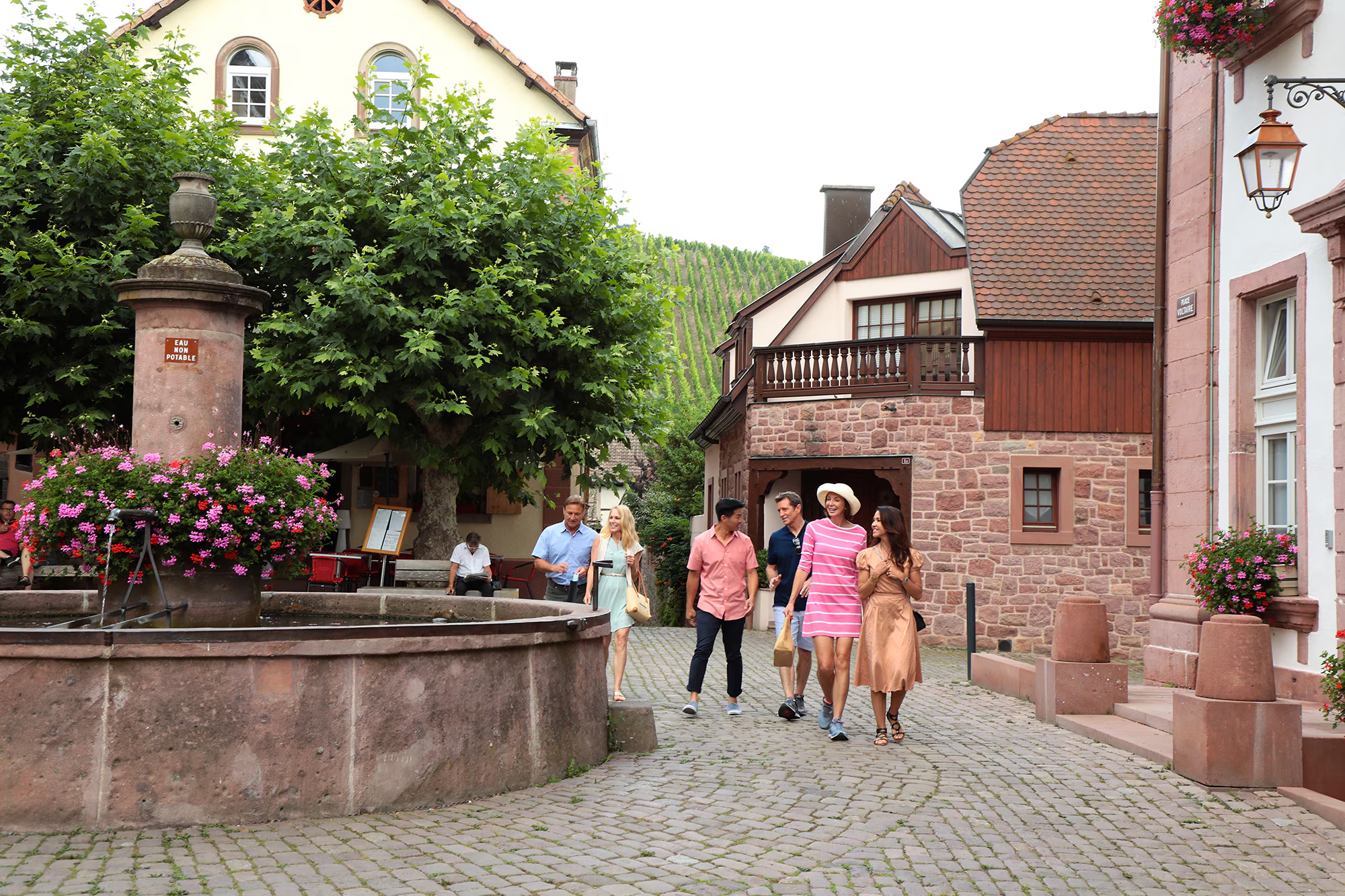
Guided Hiking Tours
The beauty of Europe does not simply lie in its architecture and landmarks – there are also breathtaking sights when you venture out into nature. That’s why we have designed special included hikes that will take you a bit off the beaten path, showing you incredible destinations from a unique perspective and giving you a chance to revel in the fresh air. With hikes ranging anywhere from two to seven miles and varying from extended city walks to hilltop castle treks, you are sure to find a wonderful hike that suits your style.
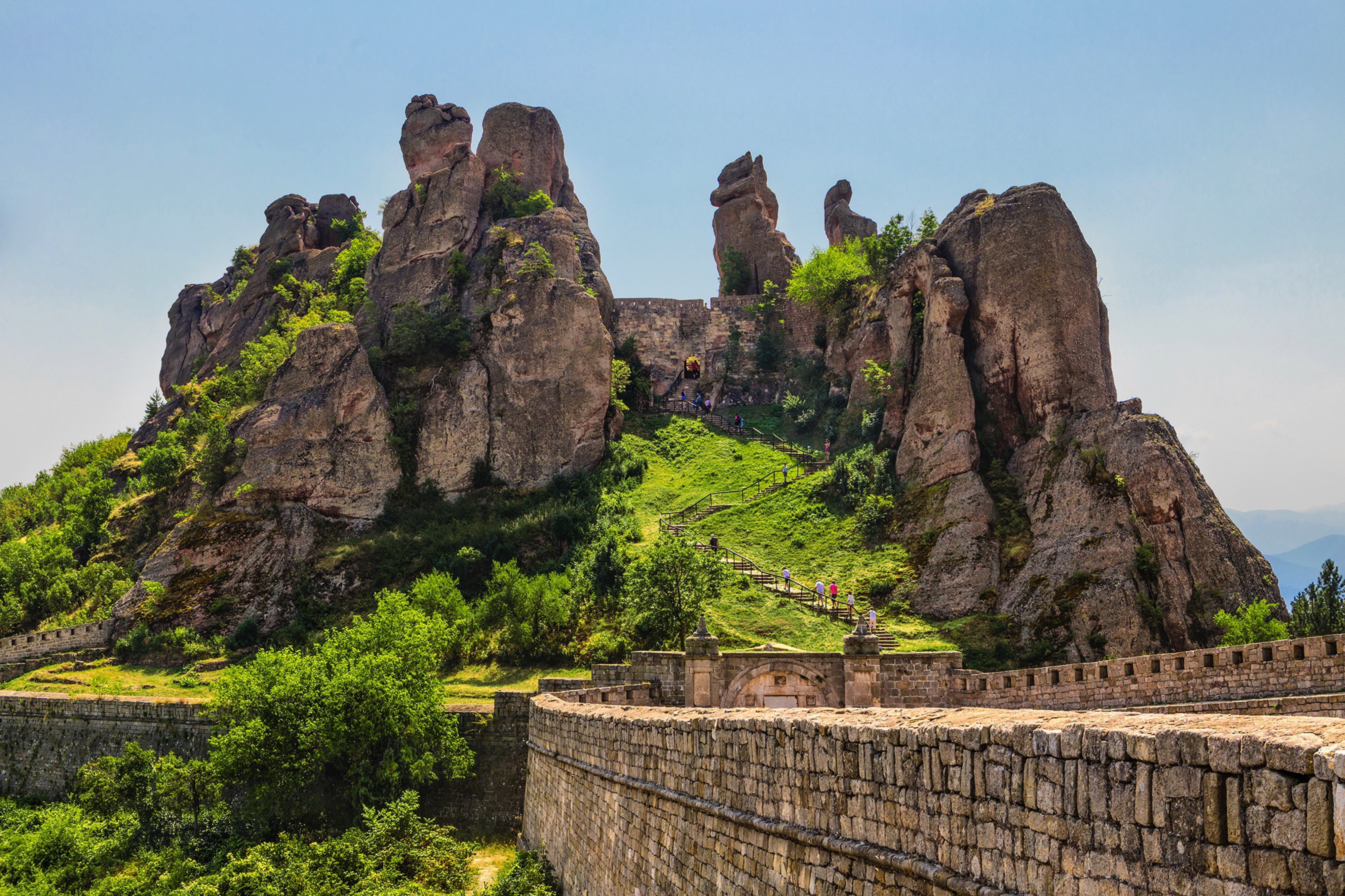
Special Interest Tours
We offer a variety of included tours specially curated with your individual passions in mind. Enjoy exploring the world through your tastebuds? Indulge in authentic Belgian waffles and chocolate in Antwerp or learn the art of French breadmaking in Libourne. Are you interested in engineering? Venture through the immense aerospace and locomotive collections at Speyer’s Technik Museum. Do you love music? Browse the antique music boxes and organs at Siegfried’s Mechanical Instrument Cabinet while cruising the Rhine.

Main Lounge & Bar
This versatile space hosts a bar, dance floor, plenty of comfortable couches and big windows on three sides and is used for everything from the morning port talks, daytime reading and chatting to scenic cruising, afternoon tea and evening entertainment.
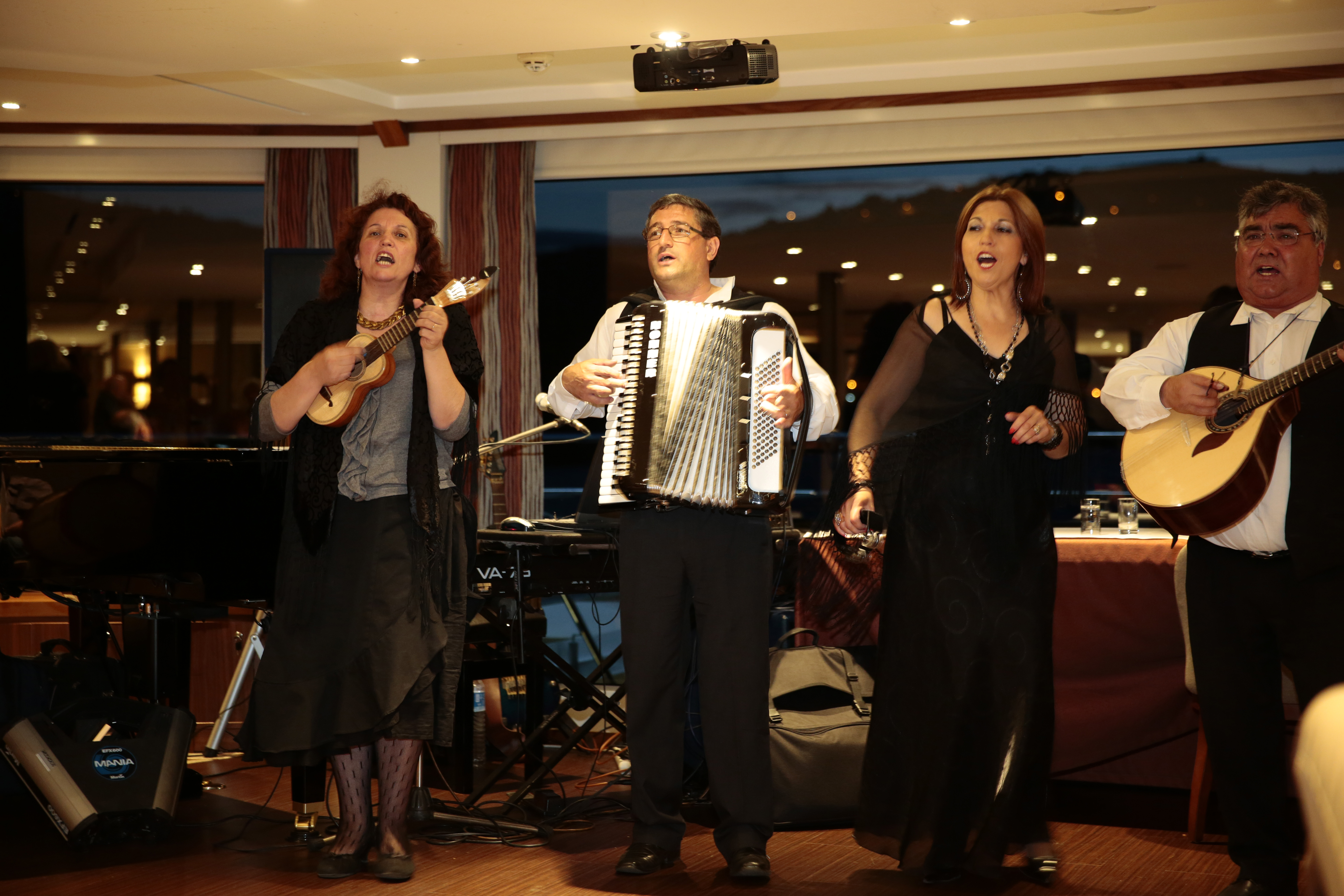
Onboard Entertainment
Daily entertainment including cultural performances

Gift Shop
The Gift Shop can be found on the Porto Deck.
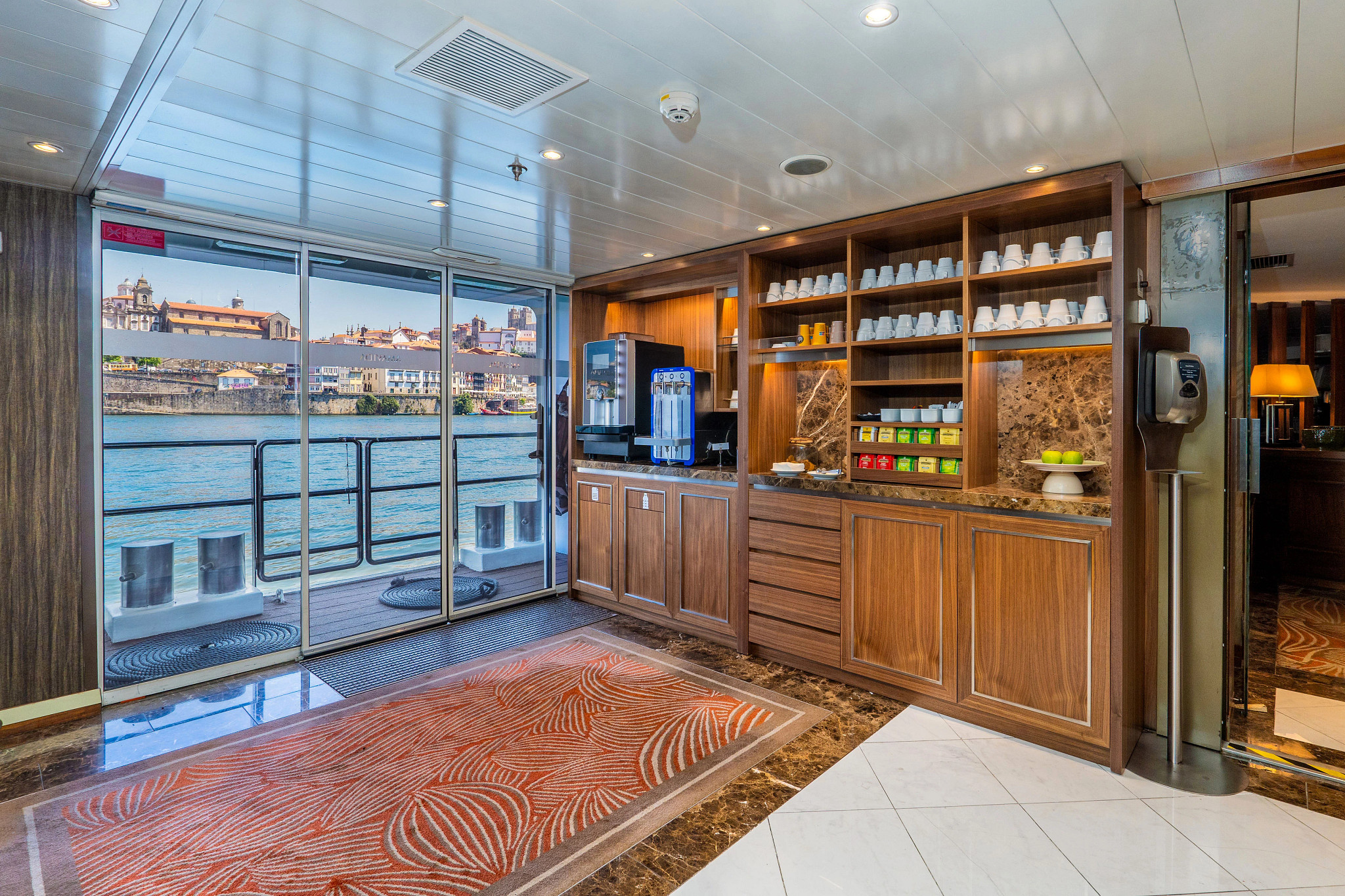
Reception
The Reception can be found on the Porto Deck.
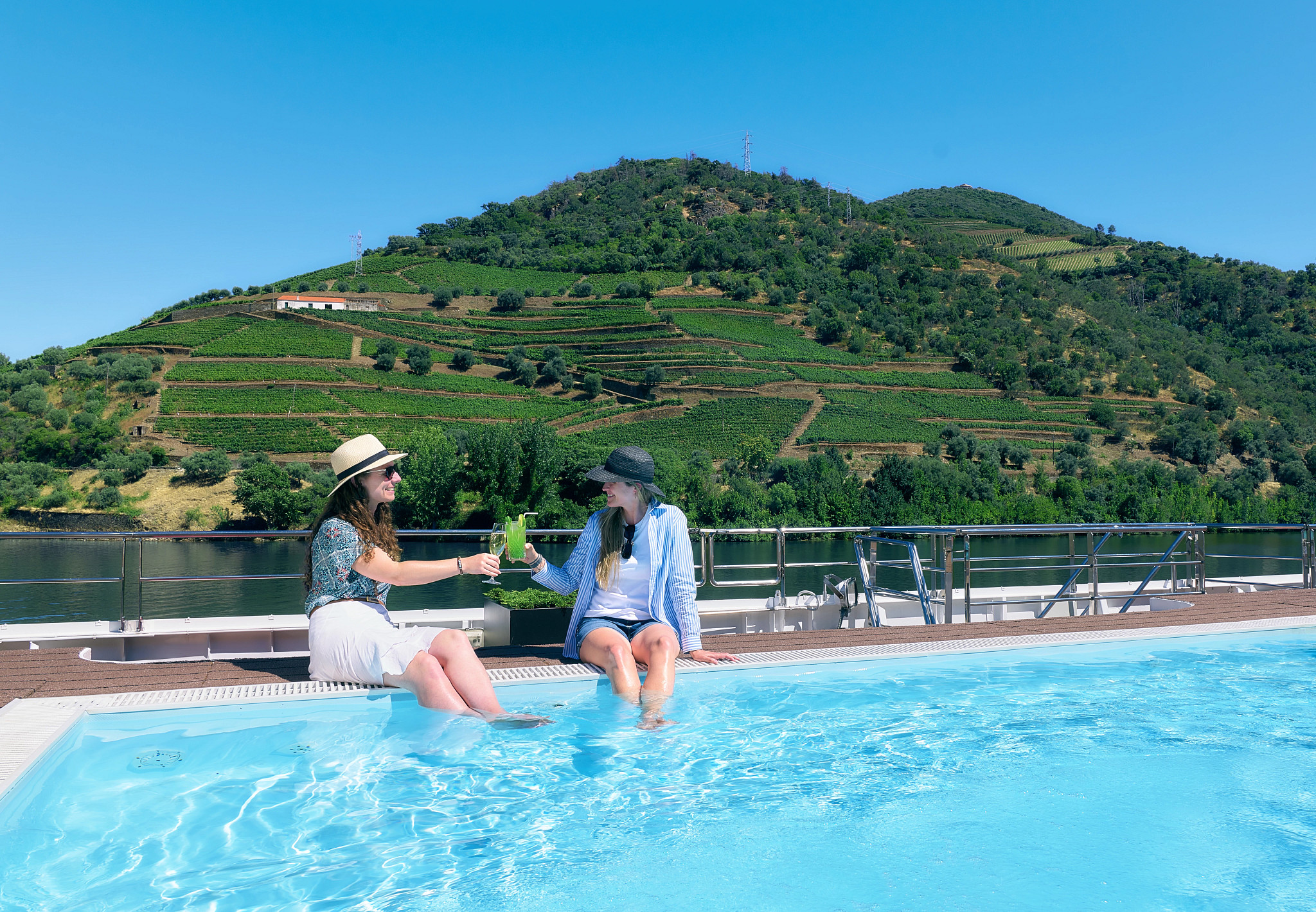
Sun Deck
Soak up some rays or take a dip in our refreshing pool with a swim-up bar as we pass by centuries-old castles, charming villages and other breathtaking scenery.
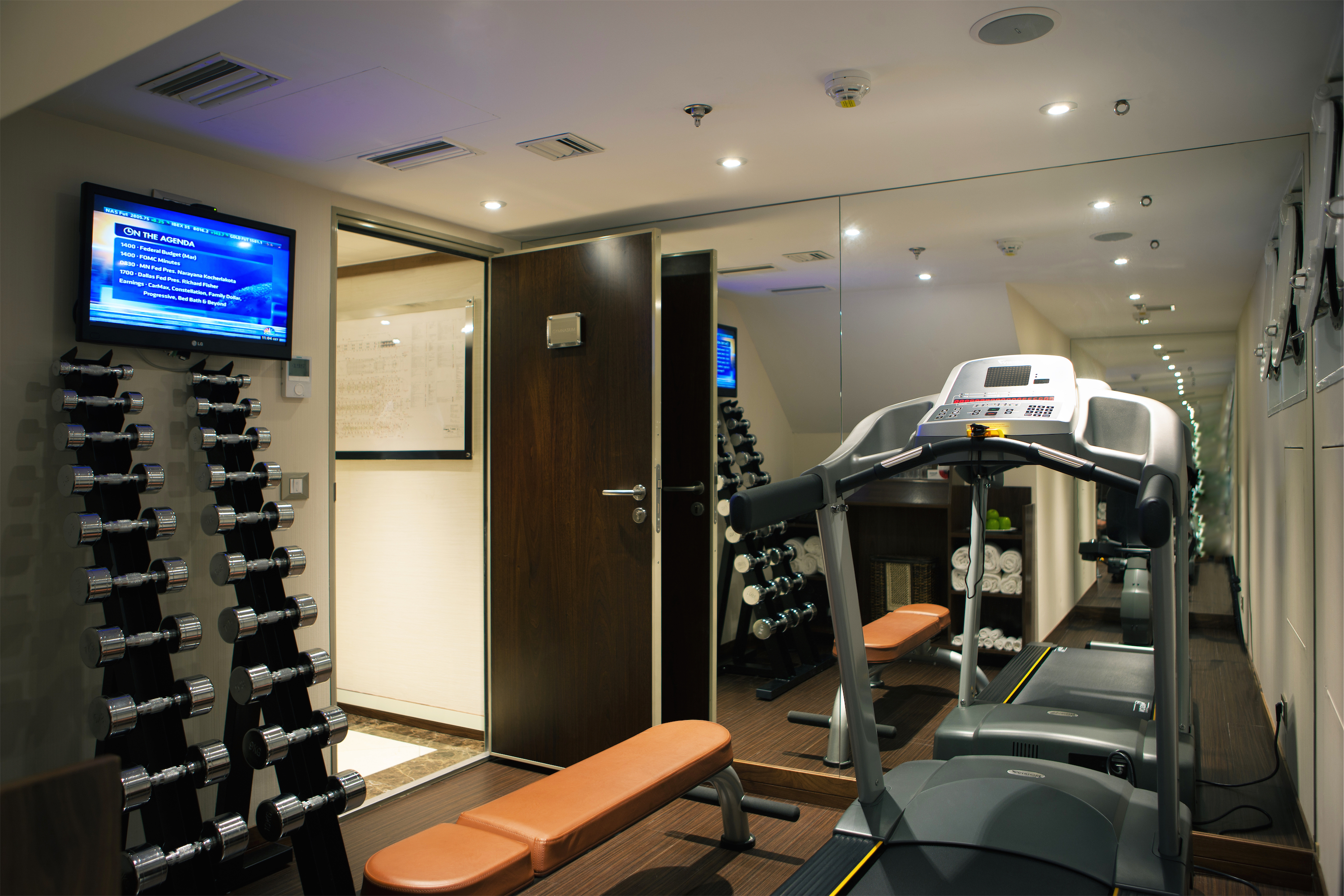
Fitness Room
Are you looking for a way to stay fit on vacation? Hit the treadmill or lift some weights while cruising from one destination to the next.
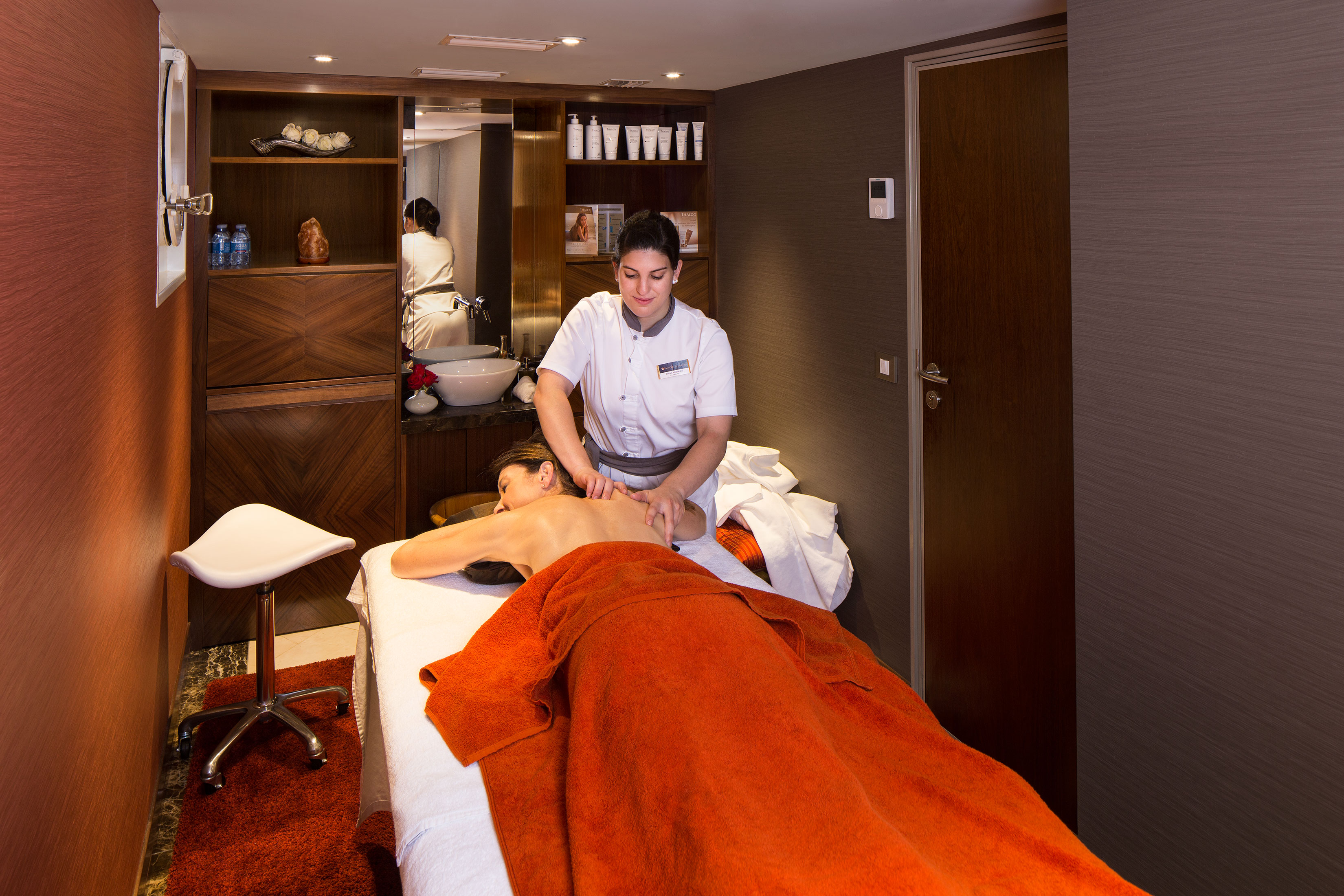
Spa
After a marvellous day of immersive shore excursions, return to the ship and treat yourself to a bit of pampering with a soothing massage.
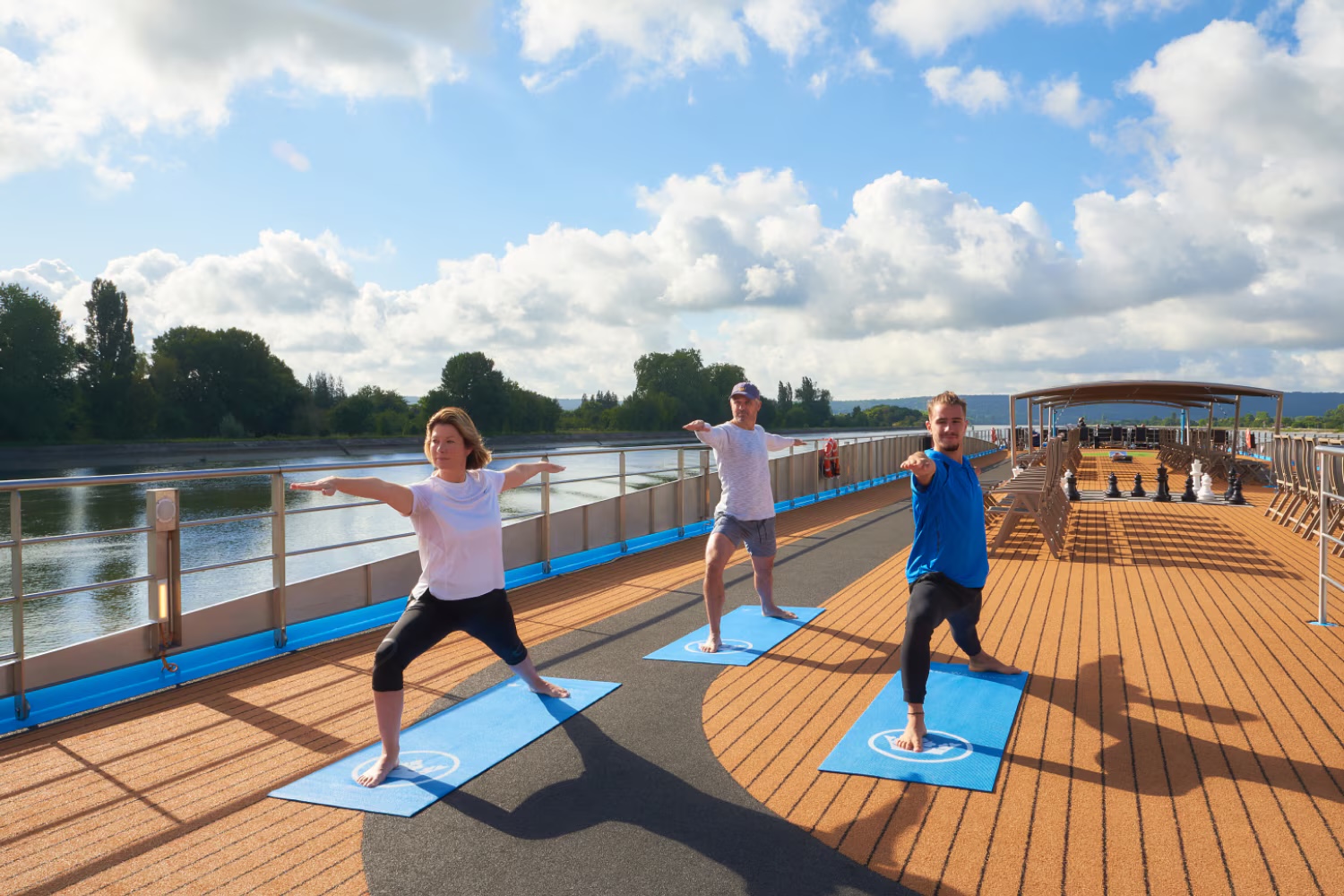
Fitness Classes
A variety of daily activities are available for guests, with group classes such as pilates, resistance band stretching, cardio, active wellness walks and dance, based on each individual Wellness Host’s expertise. Guests of all ages and activity levels are encouraged to participate and simple modifications are offered for guests with mobility limitations.
Age Restrictions
All guests under the age of 18 are to be in a stateroom with an adult and must remain supervised at all times; their safety is the responsibility of the accompanying adult(s). In the case where a triple or quad occupancy stateroom is not available or not selected, children under the age of 10 at the time of embarkation may share a stateroom with two adults only in circumstances where the child is able to share the bed with the adults – no additional bed will be provided. Please be aware that balcony staterooms of any kind may be unsafe for minors if left unsupervised. There is a minimum age limit of 4 years old, unless otherwise agreed upon by AmaWaterways.
On our Africa Safaris & Wildlife Cruise program, due to safety precautions, there is a minimum age limit of 12 years old, unless otherwise agreed upon by AmaWaterways.
AmaWaterways does not provide child-specific programs or child-minding facilities. Please reach out to us if you have any further questions regarding our child policy.
Smoking Policy
Smoking is not permitted anywhere inside any of the ships. Smoking is only permitted on the Sun Deck. For the safety and comfort of all passengers on board, your cooperation in observing the no-smoking policy is greatly appreciated.
Disabled Facilities
Reasonable efforts are made to accommodate the special needs of disabled cruise participants, but no responsibility will be undertaken for any denial of services by carriers, hotels, restaurants, or other independent suppliers. Tour buses are not equipped with wheelchair ramps and cabin doors are not wide enough to allow access by standard wheelchairs.
Wheelchairs and walkers cannot be carried on tour buses, due to space limitations. Wheelchair passengers should be aware of these limitations. For safety reasons, passengers in wheelchairs cannot be carried on ramps in ports where the ship is at anchor. We regret that we cannot provide individual assistance to a tour member for walking, getting on/off tour busses and other transportation vehicles, or other personal needs. A qualified travel companion must accompany travellers who need assistance.
Dress Code
Comfortable, layered clothing adaptable to changing weather conditions is always advisable for daytime excursions. For the evening, “Casually elegant” attire is recommend and you may want to pack something a little dressier for the Captain’s night/Farewell Dinner – similar to how one would dress to dine at a 5-star restaurant. Comfortable shoes are recommended for excursions and workout clothing if you plan to take part in any wellness activities, active tours or use the onboard gym. Depending on the time of year, clothing that can be layered is highly recommended.
Dietary Requirements
Please advise your Travel Agent or call us directly to advise if you have any dietary restrictions or allergies prior to embarkation. In most cases, we will do our best to accommodate special dietary requests and food allergies, but with one exception: Kosher. This diet has specific rules regarding food and its preparation and the shipboard environment does have limitations that prevent us from being able to adequately cater to this dietary need. Please note, though we can provide options to accommodate food allergies and sensitivities, we cannot guarantee there will not be any cross-contamination.
Medical Facilities
Europe: There are no medical facilities on board. However medical services can easily be called from shore if required.
Vietnam & Cambodia: We do not employ doctors or nurses on board the ships. In the event medical assistance is needed, appropriate medical facilities will be contacted. Note that response time can vary.
Africa: We do not employ doctors or nurses on board the Zambezi Queen. In the event medical assistance is needed, appropriate medical facilities will be contacted. Note that response time can vary.
Internet Access
Europe: High-speed Internet service is available free of charge as part of the in-stateroom “Entertainment-On-Demand.” Additionally, AmaWaterways offers complimentary Wi-Fi throughout the ship.
Vietnam and Cambodia: Free Internet and Wi-Fi in the lounge with computer stations.
Africa: Free Wi Fi is available but may be limited and sporadic during certain times of the day due to the ships isolated location.
Excursions
Europe:
Every excursion is included with your choice from up to six guided tours each day, all operated in small groups. In every city or town you visit, there is typically a sightseeing tour offered at three unique activity levels for gentle walkers, regular walkers and active walkers, along with free time to explore the city according to your own interests. The sightseeing tours can take place on foot, via motor coach, or a combination of the two. Each tour is led by a qualified, licensed English-speaking local guide or your Cruise Manager. On select excursions, we also have a “Late Starter” option for guests who wish to sleep in but do not want to miss key tour highlights. For those guests interested in exploring Europe from an exciting new perspective, we offer guided bicycle and hiking tours in select cities. In addition to our many choices of excursions we also offer our special interest tours such as wine tastings and culinary demonstrations, offering small groups the chance to be even more immersed into the local life. In the event of water level problems on certain stretches of the river, it may be necessary to operate part of the itinerary by motor coach or to alter the daily program as determined by the ship’s Captain.
Laundry Services
Laundry services are available on board for a fee. Price lists are available in your stateroom. Please note that clothes cannot be dry cleaned on board.

Sun Deck
- Navigation Bridge
- Heated Pool
- Sun Deck

Porto Deck
- Main Lounge
- Gift Shop
- Reception
- Elevator
- CAT A Staterooms
- Suites

Lisbon Deck
- Elevator
- Main Restaurant
- CAT B Staterooms

Douro Deck
- Fitness Room
- Spa
- Elevator
- CAT D Staterooms
- CAT E Staterooms


